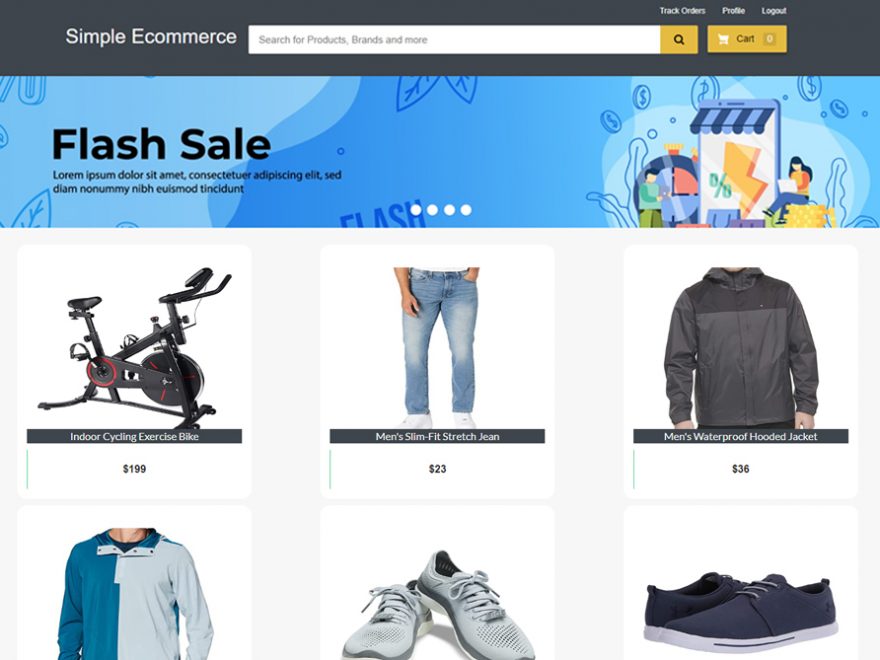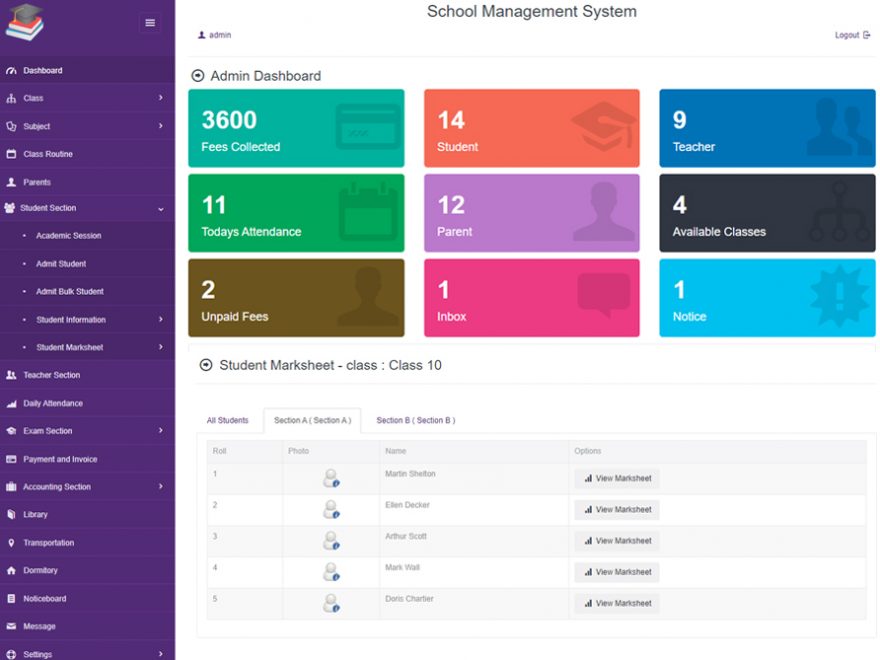A basic project using Python and the Django Web Framework to create an online ecommerce site. The Django project below has all of the major elements that second-year IT students can use for their college projects. It comes with a lot of useful tools that allow customers to shop online, handle orders, and much more. This system, as well as the website’s concept, is well-defined, comparable to real-world scenarios, and well-implemented. Please scroll down to the bottom of this post for the Download button to get a free eCommerce site project in Python Django with source code files.
About Ecommerce Site Django Project
This Python Django eCommerce site project focuses mostly on dealing with online shopping and order administration. The system also shows all of the products that are offered. Additionally, the system enables for the management of client records. This project is clearly divided into two sections: Customer and Admin Panel. In this web application’s overview, a consumer can easily register from the client-side. At first, the website lists all of the available products along with their descriptions. This website, like any other eCommerce website, has a cart system. Customers can add a large number of items to their cart before checking out. When it comes to check out, there is a basic payment form that clients must fill out. In fact, after a successful payment, consumers can browse their order list and track their orders. Customers can also do searches and edit their user profiles.
Admin Panel
The system is completely under the control of an administrator. He or she has the ability to manage clients, orders, and items. Each part contains its own set of details, such as a name, photos, and other pertinent information. The setup of products is the initial step in the management of this system. Each has a few minor fields, such as a name, a short description, a price, and an image. From the client’s perspective, all of the published items are fully visible. The user can manage the overall records, such as the number of registered users, orders, and published products, by logging into the admin panel. When it comes to registered users, the admin can see a list of them with all of their information. The administrator can perform tasks such as removing or changing client information from this page.
Order Management and Invoice
After a successful payment, the system transfers each and every customer’s order details to the order management section. Every order is tagged as pending by default, which is viewable from both sides. An administrator can see a list of outstanding orders and take appropriate action. An administrator must update each order’s status in order to accomplish this. The status of an order can be changed from pending to confirmed, on the way, or delivered. Which is entirely dependent on the status of their product and the stage of delivery. Customers may actually observe and follow each and every order with each and every change. This allows them to be informed about their orders and when they will arrive. Customers can also obtain an invoice from the orders area, which includes all relevant information.
Finally, while using this eCommerce Site Project in Python Django Framework, a clean and easy dashboard is presented with multiple color choices for a better user experience. A free open-source CSS framework for its UI elements; Bootstrap is also on board with some Vanilla CSS. Presenting a new e-commerce website project written in Python Django, complete with an admin panel and client-side interactivity. That, too, has all of the necessary characteristics for follow-up, as well as a competent resource for educational reasons.
Available Features:
- Client-Side Interaction
- Admin Panel
- Customer Registration
- Add to Cart System
- Search Products
- Simple Payment Structure
- List Orders
- Track Orders
- Download Invoice (PDF)
- View/Update Profile
- Order Management
- Product Management
- Customer Management
| Project Name: | Ecommerce Site Django |
| Technologies Used: | Python with Django Web Framework |
| Database: | SQLite |
| Type: | Website |
| Developer: | Sumit Kumar |
| Updates: | 0 |
click here for more php projects
How to download Project with Source Code.
How to Run This Project:
- Firstly, after you finish downloading the project, unzip the project file and head over to the project root folder.
- You can also create a Virtual Environment and Activate it.
- Open your Terminal/Command Prompt on the project’s root folder.
- Install the Requirements:
pip install -r requirements.txt. - Then, make database migrations:
python manage.py makemigrations python manage.py migrate- And finally, after a successful migration run the application:
python manage.py runserver - At last, open up your favorite web browser
- Go to URL “http://127.0.0.1/[ PORT_NUMBER ]/“
- For the Admin Panel credentials, you have to create one with a superuser.
And there you have it: a complete Django setup for the Online Voting System project. To begin, you only need Python and Django installed on your local PC, with the rest of the modules listed in the requirements.txt file. However, the versions may vary depending on the project requirements; however, it can be used with Python virtual environments. Also, get the source code for a free ecommerce site project in Python Django. As a result, this Django E-commerce Website is a straightforward project for all levels of beginners. It does, in fact, aid in the broadening of huge knowledge into Django web applications. Finally, this entire Django project with open source code is an absolute project and a valuable opportunity for users to learn and explore more.
Note: Only for Educational Purpose
CLICK HERE FOR PROJECT REPORTS AND TUTORIALS
Frequently Asked Question (FAQ)?
Django, a Python web framework, is used to implement the system. Many technologies must be studied and understood in order to construct an e-commerce website. The project’s scope will be limited to certain aspects of the e-commerce website.
Django is ideal for e-commerce businesses since it scales well with business growth and is well-suited to tiny websites. Django is capable of handling hundreds or thousands of visitors at a time. It’s made up of separate components that you can unplug or change at any time to suit your needs.
How to Build an Ecommerce Website Step-by-Step
Select your perfect ecommerce platform.
Purchase a domain name.
Find a developer.
Pick your ecommerce theme.
Customize your ecommerce template.
Add your products.
Set up payment options.
Sort out your shipping settings




Leave a Reply